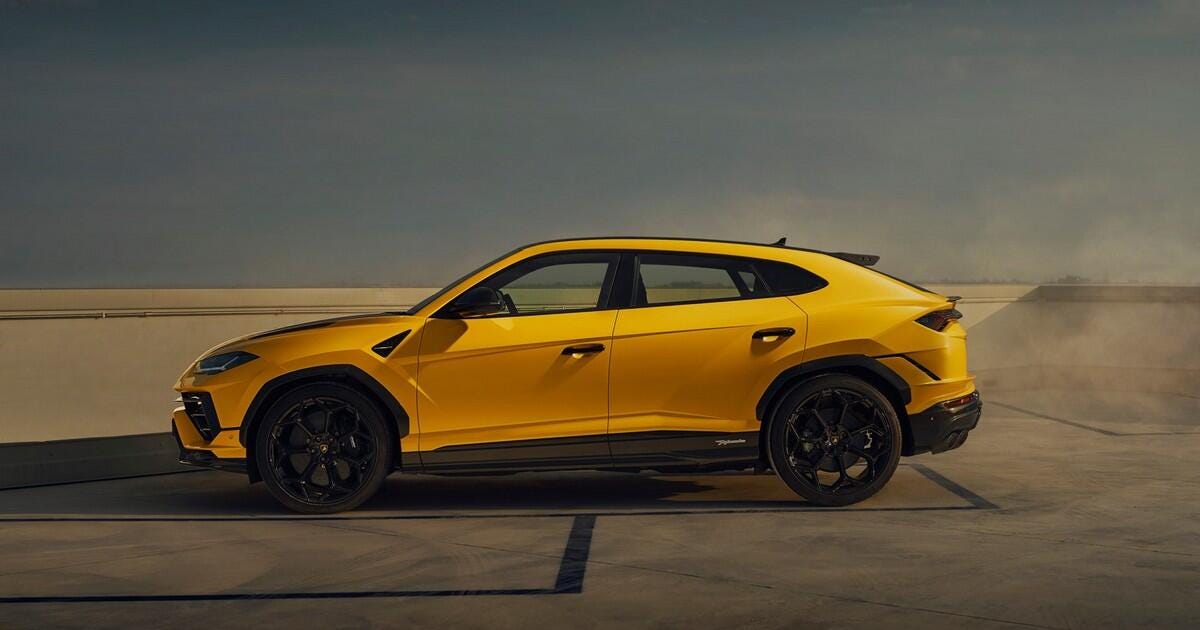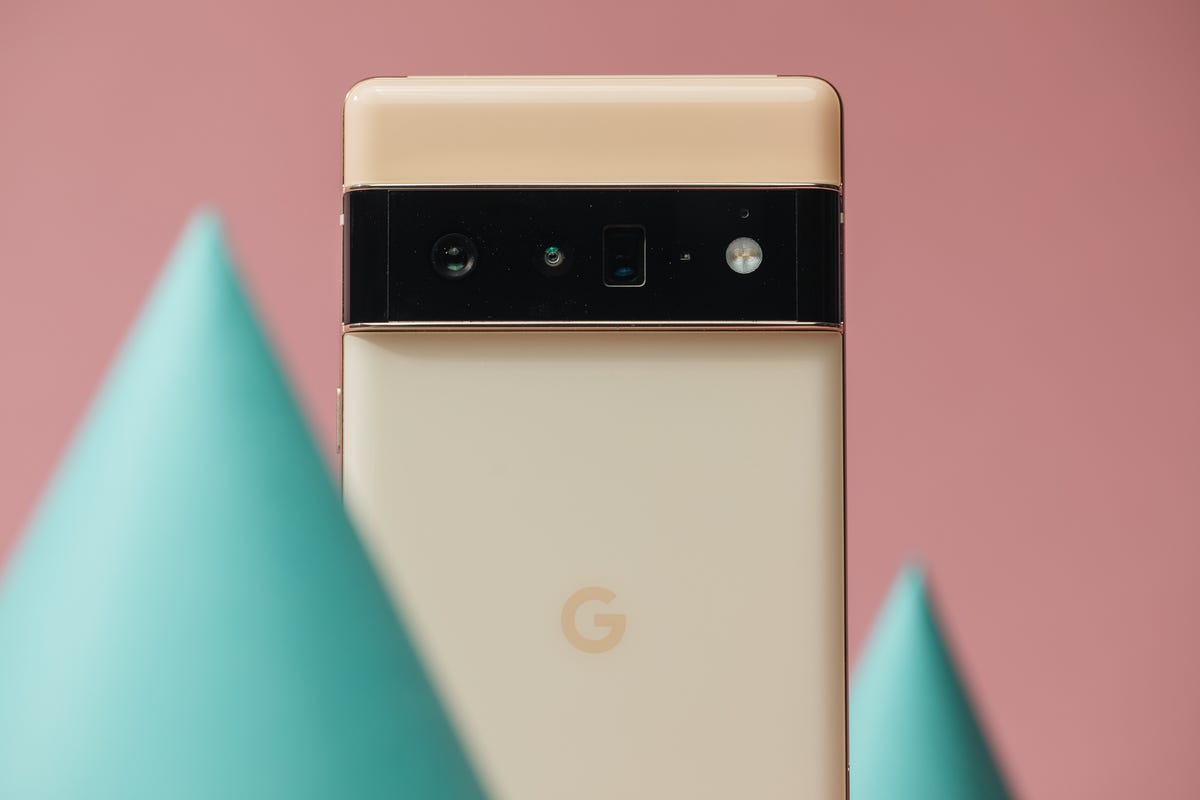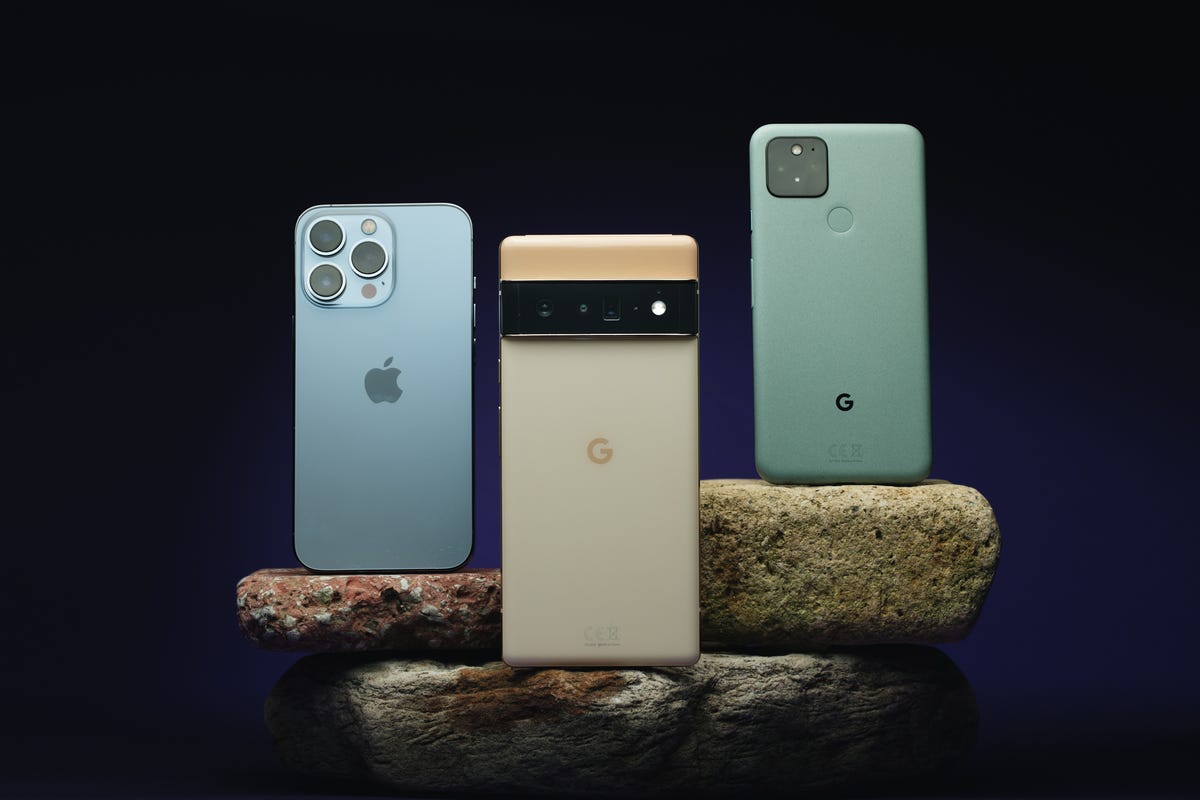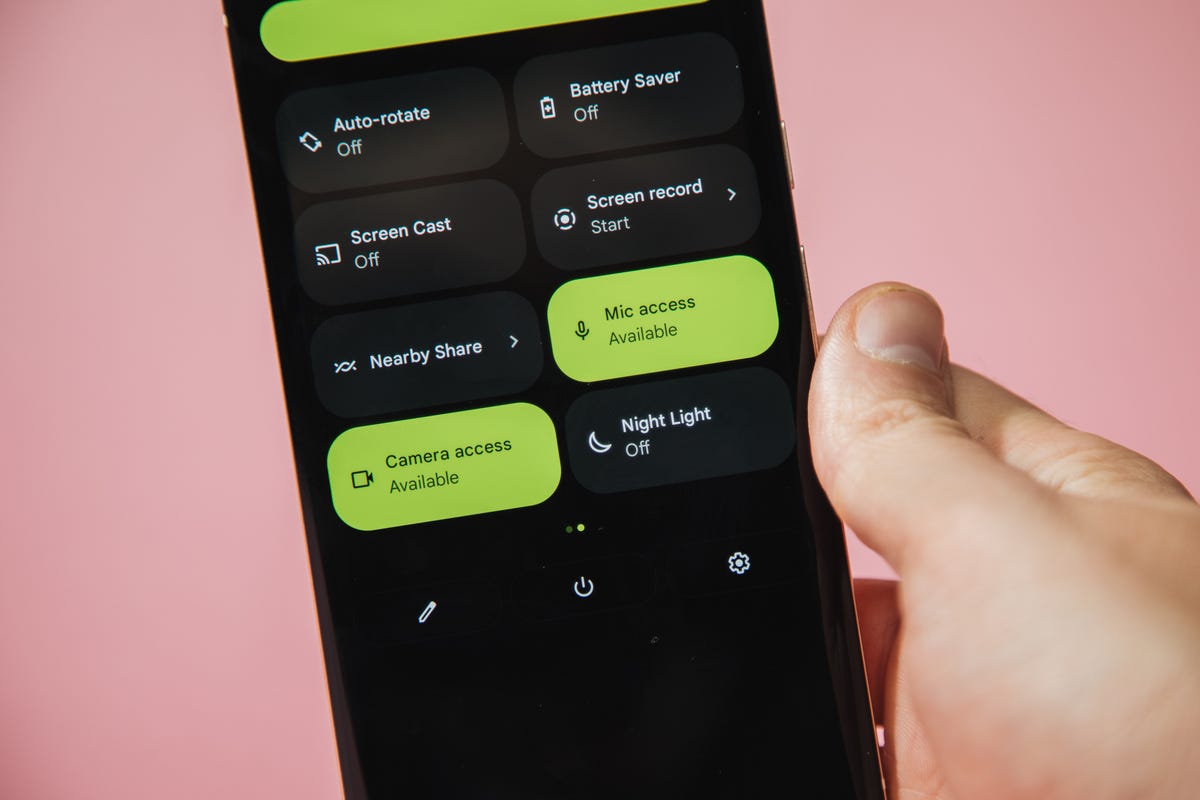Watches 9 could help the apple watch catch up to fitbit android watches 9 could help the apple watch catch up to fitbit versa watches 9 could help the apple watch catch up to fitbit for kids watches 9 could help the apple watch catch me if you can free watches 9 could help the apple watch series watches 9 could help the apple watch apps watches 9 could help the beatles watches 9 could help the aged watches 9 could help but watchos 9 calendar video

WatchOS 9 Could Help the Apple Watch Catch Up to Fitbit and Garmin
This story is part of WWDC 2022, CNET's complete coverage from and about Apple's annual developers conference.
The software that powers the Apple Watch is getting an upgrade. Apple announced WatchOS 9 on Monday at its Worldwide Developers Conference, where it showcased new fitness features for runners, better sleep tracking, an app for tracking medications and new watch faces. Such features will help Apple close the gap between its smartwatches and rival devices from companies like Fitbit, Garmin and Oura as it continues to focus on health and fitness as key selling points.
The update will debut in the fall for the Apple Watch Series 4 and higher, and a developer preview is available immediately. The public beta will launch next month.
With WatchOS 9, the Apple Watch will gain new metrics intended to help runners better understand their performance and reduce risk of injury. These include vertical oscillation, stride length and ground contact time. A new workout view will let you see more information at a glance, such as segments, splits and elevation.
Heart rate zones will give you deeper insight into the intensity of your workout in WatchOS 9. And a new multisport workout option will let triathletes easily switch between run, bike and swim tracking. Apple is adding a custom exercise option, too, that permits an interval workout that incorporates rest.
The Apple Watch is already a comprehensive fitness tracker, but it lacks the more specific tools found on dedicated running watches. Even Garmin's entry-level watches like the Forerunner 55 have cadence alerts, pace guidance and training plans. The new features in WatchOS 9 will help the Apple Watch catch up in this regard, possibly making it more appealing to runners.
Apple is also improving its sleep analysis by bringing Sleep Stages to its smartwatches. As the name implies, Sleep Stages will tell you how much time you spent in REM, core and deep sleep, giving Apple Watch wearers a more comprehensive picture of their sleep. Fitness trackers from Fitbit, Samsung and other companies have been offering this feature for years, while Apple has focused only on sleep duration and respiratory rate, until this point.
But the Apple Watch is still missing one sleep tracking tool I've come to appreciate on other fitness trackers: a sleep score. As its name implies, this feature issues wearers a score assessing the quality of their sleep based on a variety of factors, which typically include movement and heart rate data.
Read more: Your Apple Watch Will Soon Actually Track Your Sleep
Aside from these new running metrics and sleep tracking features, there are several other health and wellness improvements coming in WatchOS 9. The Apple Watch will now be able to provide more context about atrial fibrillation with a new feature called AFib history, which tracks frequency and other trends related to the heart condition.
A new Medications app is also coming to WatchOS 9. The app is meant to make it easier to log medicine and set regular reminders to take specific medicine and vitamins, even without an Apple Watch. You'll be able to add medications by scanning a label or typing in the name manually. The app will show information about medication interactions too.
The update will bring four new watch faces and support for six new keyboard languages. The new watch faces are called Lunar, Playtime, Metropolitan and Astronomy. Other features include less distracting notifications when the Apple Watch is in use, new Quick Actions for answering calls or taking a photo with a double-pinch gesture and a redesigned dock that prioritizes apps currently in use.
New software updates for Apple's major products are usually the centerpiece of WWDC. Apple uses its opening keynote as an opportunity to drum up excitement for new features and updates before the software arrives later in the year. Although most of the conference is taking place virtually this year, Apple hosted a special event for developers and students on Monday at its Apple Park campus.
Apple has maintained its leading position in the smartwatch industry. Apple accounted for 36.1% of smartwatch shipments in the first quarter of 2022, representing an increase from 35.9% in the same period last year, according to Counterpoint Research. Apple snagged 28.9% of basic watch and smartwatch shipments in the first quarter of 2022, according to a report from research firm Canalys.
To find out more about Apple's major announcements at WWDC, check out everything we've learned about iOS 16 and MacOS Ventura.
Source
How to place install carbon monoxide detectors in your home how to place install carbon monoxide detectors in your home how to place silverware on table how to place an order online how to place furniture in living room how to boil eggs how to take a screenshot

How to place, install carbon monoxide detectors in your home
Carbon monoxide is a colorless and odorless gas, but that makes it all the more dangerous. The Centers for Disease Control and Prevention reports that 430 people die and 50,000 are hospitalized annually due to carbon monoxide poisoning -- primarily in household settings. You're probably aware of where to put smoke detectors and the importance of fire safety. But carbon monoxide detectors are as critical to you and your family's safety.
Here's everything you need to know about where to put them and how to use them.
Where should you place CO detectors?
If you're not sure of where to install CO detectors, you're not alone. Carbon monoxide detectors aren't as common as smoke alarms, leaving many people guessing on where to place them. The Consumer Product Safety Commission says proper carbon monoxide detector placement is "on each level of the home and outside sleeping areas."
For more specific spots, it's important to understand how carbon monoxide works. It's produced by flame sources or fuel-burning machines such as fireplaces, furnaces, gas driers, water heaters and vehicles. The gas is a slightly lighter than air and will rise, which can lead to carbon monoxide poisoning.
The best place for a CO detector is on a wall roughly five feet from the floor, where it can measure the air at a height that people in the house are breathing it. A reasonable alternative is placing the detector on the ceiling and six inches from the wall. Here are the best places to install CO detectors by room.
In the kitchen
The key to placing a CO detector in the kitchen is to avoid mounting it near or over a flame-producing appliance such as a stove, grill or fireplace. To avoid false alarms, install a detector 5 to 20 feet away from a fire source.
Outside bedrooms
As mentioned, the CPSC recommends at least one carbon monoxide detector on each level of a home, outside sleeping areas. The recommendation is based on having a minimum number of detectors. Putting one in the hall allows all bedrooms to hear the warning if CO gas is detected -- which is particularly important as the symptoms of carbon monoxide poisoning are often mild enough that they won't wake you.
If you have multiple detectors, it's a good idea to install them in bedrooms as well.
Basements and more
The International Association of Fire Chiefs recommends a CO detector in the basement since laundry machines, water heaters and furnaces are all potential sources of carbon monoxide -- and are often kept in the basement. In addition, installing a CO detector in the room or space over an attached garage is a good idea, as vehicles are one of the most common CO producers.

How to install carbon monoxide detectors
To install, follow the instructions that came with your CO detector. Here are the general steps, with a few tips.
1. Try to keep installations at least six feet away from a flame or fuel source to avoid false alarms. You can mount the device on the wall at least 5 feet from the ground, or on the ceiling six inches from the wall. Some devices plug directly into an outlet.
2. Trace and drill holes and hang the mounting bracket.
3. Be sure to use fresh batteries.
4. Test the device by pressing and holding the test button. You should see lights as well as hear an alarm.
5. Attach the CO detector to the mounting bracket.
CO alarm maintenance
Smoke and CO alarms both need regular maintenance to operate properly. To maintain a CO alarm, start by pressing the device's test button to check its battery level. Even if the device works, you should replace the batteries at least once a year.
Should carbon monoxide detectors be replaced?
CO detectors have a limited life span. Unlike smoke detectors that make a chirpy, warning sound when the battery is low, CO detectors start chirping when it's time to replace them. Plan to replace your CO alarms every five years.
Types of carbon monoxide detectors
There are three main types of carbon monoxide detectors available. To choose the type that works best for your home, learn more about each type.
Smoke/CO dual detectors: Some detectors are all-in-one, able to detect smoke and CO gas. They're best for space-challenged homes or areas where you want to reduce visual clutter. Many smart detectors are a combination. They are capable of notifying you of either event.
Battery-operated CO detectors: Battery CO detectors are the easiest and most flexible type to install. They use sensor technology that reacts to extended CO gas exposure. You can mount the device anywhere and even move it, since it doesn't rely on a fixed power source. However, you'll need to change batteries once per year to ensure the detector has enough energy to operate properly for another 12 months.
Hardwired or plug-in CO detectors: Detectors that can be wired to an existing household current -- or plugged into an outlet -- are low maintenance because they don't need batteries. The sensor cycles itself to purge and resample for carbon monoxide.
What to do if your CO detector goes off
If your sensor goes off, you'll need to act quickly. Having a home safety plan that covers what to do in case of an emergency could be a lifesaver. Not all events that cause the CO detector to sound off require calling 911. A good first step is to check on everyone in the house to find out if anyone has symptoms similar to having the flu such as nausea, dizziness or a headache.
If one or more individuals are feeling sick, evacuate your home to avoid extended exposure to CO gas. Make sure that everyone who is affected goes outside to breathe in fresh air and call 911. If no one is feeling sick, you can contact the fire department or a certified technician to investigate the possibility of a problem. Ventilate the rooms, reset the alarm and turn off gas-burning appliances, waiting outside or at a neighbor's house if possible while you seek guidance from specialists.
Read more about home safety on CNET:
9 devices you should buy to make your home instantly safer
The hows and whys of monitoring air quality in the home
Fire safety guide: How to prevent fires and prepare for emergencies
Source
Stranger things halloween ideas stranger things halloween episode funny stranger things clips stranger things on youtube stranger things clipart transparent stranger things season 5 stranger things wallpaper

'Stranger Things' clip celebrates Halloween and Ghostbusters
HEADLINE:
Netflix's next season of "Stranger Things" will tackle monsters, the Upside Down aftermath and more in the small town of Hawkins, Indiana.
But in this video clip posted on Thursday, originally included in the "Stranger Things" mobile game, we see Will with his buddies Dustin, Lucas and Mike trick or treating around the neighborhood on Halloween.
It's the '80s, so of course the boys are dressed as Ghostbusters.
Sadly, not everyone gets the pop culture reference and a neighbor compliments them on their exterminator costumes instead.
The bulk of the video shows our heroes debating the merits of the Three Musketeers chocolate bar as the runt of Halloween treats.
Who knew the chocolate would send our favorite lads into an angry tirade?
"It's just nougat!" Will yells.
We also get a glimpse at a new character called Max, played by Sadie Sink, who is dressed as the crazed killer Michael Myers from the classic horror film "Halloween."
"Stranger Things" returns to Netflix on Oct. 27.
Source
Lamborghini s new urus performante ups the suv tv lamborghini s new urus performante ups the suv starts lamborghini s new urus performante ups the suv kick lamborghini s new urus performante ups thermal printer lamborghini s new urus performante ups the colony lamborghini s new urus performante ups store lamborghini s new urus performante ups drop lamborghini s new urus performante ups customer lamborghini s new urus performante price lamborghini s new car lamborghini sian lamborghini sto

Lamborghini's New Urus Performante Ups the SUV Ante Again
What's happening
Lamborghini is turning up the wick on its Urus SUV.
Why it matters
The Urus is already one of the most extreme SUVs on the road. This will just make it more so.
Last year, the Lamborghini Urus did exactly what it was designed to do: break sales records worldwide for the Sant'Agata Bolognese-based maker of exotic machines. Lamborghini sold 8,405 cars last year, 5,021 of which were Urus SUVs. That's up 13% over the year before despite global parts shortages hobbling production and delivery worldwide.
So it's mission accomplished on that front -- but far from job done. Now comes the time for Lamborghini to do what it does best: start fiddling and fettling to create special editions. For the Urus, that means more power, downforce, styling and, of course, cost, hopefully addressing my colleague Daniel Golson's conclusion that the regular Urus is just a little too tame.
Meet the Urus Performante, the new $264,671 (after $3,995 destination charge) flavor of Lamborghini's venerable super-SUV. Power has been raised from 641 in the regular Urus to 657 in the Performante, which in metric figures is a diabolical 666 CV. Weight, meanwhile, drops 104 pounds, while revised suspension with steel springs lowers the ride height by 20 mm. The Performante is also 16 mm wider thanks largely to bigger, wider wheels (22s are standard, 23s optional) with matching Pirelli Trofeo R tires.
The net result is a 0 - 62 mph sprint at 3.3 seconds, 0.3 quicker than before and a top speed of 190 mph. That's despite 38% more downforce at the back thanks to a far more aggressive rear-end treatment, featuring a carbon wing and diffuser.
There's plenty more carbon where that came from, including the hood, wheel arches and, optionally, the roof. In fact, Lamborghini says the Urus Performante has the "highest number of carbon parts in its segment," which will really impress the valet at your next soiree.

The interior is a visual counterpoint to the extreme exterior.
LamborghiniThe inside is a veritable sea of black Alcantara, but this being a Lamborghini you can specify leather if you prefer along with a rainbow of bright colors as highlights.
It's through the car's multi-function display that you'll toggle through the various drive modes already standard on the Urus, plus a new one unique to the Performante: Rally. In this mode, Lamborghini says the oversteer is elevated to a "thrilling new level" on loose surfaces. That sounds like a splendid time to me.
Will the new Urus bring more of the traditional Lamborghini edge to the SUV? We'll find out soon. First Performante deliveries are set to take place before the end of the year, so if you're keen you'd best dial up your dealer and find a little more room in the garage.
Source
5 game day essentials make the best air rifles 5 game day essentials make the world 5 game day essentials make the road 5 game day essentials make thesaurus 5 game day essentials basket buffalo wild wings 5 game day menu best playstation 5 games balloon tower defense 5 game ninja kiwi friv 5 games gta 5 gameplay

5 game day essentials: Make the best air fryer chicken wings and more
The big game kicks off on Feb. 7 at 6:30 p.m. ET. Sure, we're skipping the get-togethers this year due to the pandemic, but that doesn't mean we won't still eat socially unacceptable quantities of Buffalo chicken dip and loudly cheer on our respective teams.
Here's a roundup of our favorite devices for enjoying football's biggest night from home this year. It includes everything from color-changing lights to show off your team's colors to the tastiest air fryer chicken wings.
Read more: Here's how to stream the game live
Festive lighting doesn't have to be reserved for the holidays. The Z Multicolor Light Strip is a fun living room accompaniment that Lifx claims can produce a whopping 16 million colors. Plus, it's capable of displaying multiple colors at the same time and you can make your own scenes and effects.
That means you're bound to be able to create special combinations that flash your team's colors when they score -- or throughout the big game. We also like that this product is Wi-Fi-enabled, meaning you don't have to pair the strip to a hub or any other clunky hardware to get started.
Best smart lights of 2021.
We aren't watching the big game from a bar this year, but the Fizzics DraftPour promises to be the next best thing: draft beer at home. Basically, you put a can or bottle of beer in the countertop device, pull the lever and it's supposed to taste like it came from a tap. How, you ask? Science. Fizzics claims the DraftPour works using "patented fluid dynamics and sound technology."
I don't know about all that, but Andrew Gebhart liked its predecessor, the Fizzics Waytap and said it did make bottled beer "taste more" like a draft.
Fizzics says the DraftPour works on all types of beer, with any can or bottle.
First introduced in 2014, the Amazon Echo (now in its fourth generation) remains our favorite smart speaker. This latest iteration has a spherical design instead of the classic cylindrical shape of past models, as well as improved sound quality.
It's a solid addition to your kitchen or living room any time of the year -- play music and podcasts, get weather and traffic updates and control your smart home devices with a simple command. But it's also a great addition to the big game -- ask Alexa for recipe ideas, to play NFL stats and trivia and to keep you updated on the score if you have to step away from the TV.
Best smart speakers of 2021.
The Instant Pot gets tons of interest for its speedy pressure-cooking ways (which are truly awesome). But the Duo 7-in-1 does a lot more than pressure cook. It can also slow cook, make rice, steam, saute, make yogurt and keep food warm.
It's a handy device to have around all the time, but you can use it to make a variety of different big game staples, like chili, Buffalo chicken dip, beer cheese or those delightful cocktail meatballs. And when you're done cooking, turn on the Instant Pot's warm function to keep your food at the right temperature for hours.
Best Instant Pots of 2021.
We also have you covered if you don't want to mess with air fryers, beer dispensers and Instant Pots this game day. Here's a list of great food and beverage delivery services for game day and beyond: Plan for the big game: Order your party staples online. Follow along with the rest of our big game coverage, including how to stream it live and much, much more.
Read more
Source
Review google pixel 6 pro review google pixel 6 pro google pixel 6 and 6 pro reviews google pixel 6 pro review cnet reviews google pixel 6 pro reviews on google pixel 6 pro google pixel 6 pro review cnet google pixel 6 pro review 2022 pixel 6 pro review the verge pixel 6 pro vs iphone 13 pro pixel 6 review
Pixel 6 Pro Review: Google's Flagship Is Still a Top iPhone Rival in 2022
Editors' note: The Google Pixel 6 Pro's solid all-round performance and excellent camera make it a superb high-end Android phone that's well worth your money, which is why we've given it a CNET Editors' Choice award. The original review follows.
When it launched late in 2021, I said the Pixel 6 Pro isn't just the best phone Google has ever made, it's also one of the best phones you can buy. Half a year later, I stand by those words and strongly recommend you consider this phone if you're looking for a great all-round experience at a more reasonable price. Its strong performance, great software additions, unique design and excellent camera system make it the biggest rival to Apple's iPhone 13 Pro and Samsung's Galaxy S22 Ultra.
Sure, the Galaxy S22 Ultra has a few more bells and whistles. The S Pen stylus, for example, not to mention that incredible 10x optical zoom that blows both the Pixel 6 Pro's 4x zoom and the iPhone 13 Pro's 3.5x zoom out the water. The S22 Ultra is faster on benchmark tests, too. But at $1,200 it also costs a lot more than the Pixel, meaning you've really got to be dedicated to having only the most cutting-edge tech in your pocket to want to splash that extra cash.
The Pixel 6 Pro manages to offer its winning combo of specs and design at a price that undercuts its main rivals. The 6.7-inch base 128GB model costs $899 (£849, AU$1,299), a sizable chunk less than the 6.1-inch iPhone 13 Pro's $999 price and even more off the $1,099 Apple wants for the larger 6.7-inch iPhone 13 Pro Max. Sure, $899 might not be "cheap" but it represents good value when compared against the prices of other flagship phones.
Google's earlier Pixel 5 was best seen as a midrange phone with some higher-end touches, while the Pixel 6 Pro is premium all the way. From its glass and metal design to its high-resolution display and its superb triple camera, there's a lot to like here. Then there's the Tensor processor, a chip custom-made by Google for the phone, which provides ample power for all of your daily needs, better security features, 5G connectivity and a slick Android 12 interface. Battery life is good -- certainly above average -- but not great, with the iPhone 13 Pro putting in a stronger performance.
Its biggest Android rival right now is the Samsung Galaxy S22 Ultra, which does have some neat camera additions (that 10x zoom, for one thing), but it costs more and the Pixel 6 Pro offers a more user-friendly experience. The iPhone 13 Pro and Pro Max offer superb all-round use, but come at a higher price and if you're already entrenched in the Android ecosystem, it's likely not worth switching and buying all those apps again.
Those looking for the best all-round Android experience should absolutely look toward the Pixel 6 Pro.

Pixel 6 Pro or Pixel 6?
The stepdown $599 (£599, AU$999) Pixel 6 packs the same Tensor processor and lovely Android 12 software for $300 less than the Pro, but there are a few compromises it makes in order to come to that cheaper price.
It has a smaller and lower resolution 6.4-inch display that lacks the curving finesse of the Pro. Its battery is smaller, it has 8GB rather than 12GB of RAM and it lacks the 4x telephoto zoom lens found on the Pro.

The Pixel 6 Pro has a 6.7-inch display while the Pixel 6's measures 6.4 inches.
Andrew Hoyle/CNETBut it's still a great phone that's well worth considering. It provides many of the same perks of the Pixel 6 Pro at a much lower price, especially if you don't care about the top-end performance offered by the flagship. As my colleague Patrick Holland put it in his review of the phone, "For the price, I can't think of a better phone to recommend right now."
A fresh design that stands out
I didn't love the look of last year's Pixel 5. The matte, rubberized back gave the phone a more budget feel than its $699 price tag suggested. The Pixel 6 Pro is worlds apart. The rear is all glass -- toughened Gorilla Glass Victus, in fact -- that curves at the edges to meet the 100% recycled aluminum frame.
The glass curves at the edges on the front, too, as does the display beneath it, making it not only look more premium, but feel like a truly flagship device when you hold it in your hand. It's big though, packing in a 6.7-inch display, which will make it more cumbersome for some than the 6-inch Pixel 5 or 6.4-inch Pixel 6. That glass makes it slippery, too, so consider one of Google's protective cases if you're nervous about dropping it.

The Pixel 6 Pro, flanked by the iPhone 13 Pro (left) and Pixel 5.
Andrew Hoyle/CNETIt is IP68-rated for water resistance, meaning it can withstand being in 1 meter (about 3 feet) of water for up to 30 minutes. No, that doesn't mean you can take it swimming, but it does mean it should be able to shake off having the odd beer spilled over it by your clumsy mates.
An interesting design choice is the large camera bar that stretches across the back. It protrudes from the phone by about 3mm, so it doesn't lie totally flat when you put it on a table, but nor does it rock from corner to corner like phones with camera bumps just on one side. I like the look of the phone and it certainly stands out. One tip though: Get the Sorta Sunny orangey-peachy color, if you can find it in stock. The black-and-gray option, Stormy Black, looks rather dull by comparison.

The camera strip protrudes from the phone by about 3mm. As a result, it won't lie flat on a table.
Andrew Hoyle/CNETThe rear-mounted fingerprint scanner seen on the Pixel 5 has been removed, replaced instead with an in-screen scanner, which I found worked accurately and quickly most of the time, although Patrick found the Pixel 6's scanner to be much more hit and miss in his review. There's no face unlock ability, which is a bit of a shame.
Three excellent cameras
That big bar on the back hides three cameras: a 12-megapixel ultrawide; a 48-megapixel telephoto that offers 4x optical zoom; and a main camera that uses a larger 1/1.3-inch sensor, which Google says captures 2.5x more light than the Pixel 5. The cameras on the Pixel phones have always been excellent, and this new generation is no different.
Images from the main camera lens are stunning. They're vibrant, they're packed with detail and there's an amazing balance of exposure, with bright skies kept under control and shadowy areas being easily visible.

Pixel 6 Pro, main camera.
Andrew Hoyle/CNETThe golden colors of the leaves have been captured beautifully here, with a rich blue sky visible behind.

iPhone 13 Pro, main camera.
Andrew Hoyle/CNETAnd here's the same image taken on the iPhone 13 Pro. There's little to choose between them, but if I was being hypercritical, I'd say that the white balance on the Pixel 6 Pro has resulted in a warmer, more orange tone on the tree trunk, which I think looks better. You can see how the Pixel 6 Pro's camera really stacks up against the iPhone 13 Pro's in my photography shootout.

Pixel 6 Pro, main camera.
Andrew Hoyle/CNETThis scene looking towards the beautiful Edinburgh castle is a challenging shot, with dark shadows and an extremely bright sky beyond the trees. The Pixel 6 Pro has handled it well though, maintaining a lovely exposure overall.

Pixel 6 Pro, main camera.
Andrew Hoyle/CNETAnd it's much the same here, with vivid blue skies, superb exposure and plenty of detail.

Pixel 6 Pro, ultrawide camera.
Andrew Hoyle/CNETSwitching to the ultrawide lens, the scene maintains the rich colors and exposure. Zoom closer in and it's clear it has less overall detail, but it's still a lovely shot.

Pixel 6 Pro, ultrawide camera.
Andrew Hoyle/CNETAnother from the Pixel 6 Pro's ultrawide lens. But check out the iPhone 13 Pro's:

iPhone 13 Pro, ultrawide lens.
Andrew Hoyle/CNETThe iPhone's offers a much wider view that lets you capture more in the scene. They're both excellent wide lenses and both do a great job in packing in those beautiful colors, but I'd like to have seen the Pixel offering a slightly wider scene.
The 4x zoom lens is amazing too, providing tons of detail thanks to its high resolution sensor. I think 4x is a great zoom level for a phone as well; it allows you to find compositions that would be beyond the reach of lesser zoom levels, but it's not quite as restrictive as the 10x zoom you'll find on the Galaxy S22 Ultra. It's a zoom level I feel I'd use a lot on my travels and have already taken a few 4x shots with the phone that I'm really pleased with as artistic images.

Pixel 6 Pro, 4x zoom.
Andrew Hoyle/CNETThis zoomed-in image is so pin-sharp I can actually read the headline on the newspaper. It's a really impressive lens that doesn't force you to make any kind of compromise on quality in order to achieve those zoom levels. By comparison, the iPhone 13 Pro's optical zoom maxes out at 3x, so the Pixel 6 Pro is able to achieve a closer-up image. Which, frankly, I'd take any day over a wider-angle view.

Pixel 6 Pro, 4x zoom.
Andrew Hoyle/CNETIt's handy as well for focusing your view on a smaller scene like this, capturing intimate little still-life scenes, rather than grand, sweeping vistas. The fine textures on the leaves here are extremely sharp.
Google has thrown some extra features in too, including a tool that automatically removes people from the background in an image, which sometimes works well, and sometimes leaves a big splotch where a person once stood. Then there's the long exposure mode, which allows you to create ethereal blurred waterscapes and the Nightscape mode, which does an excellent job of taking shots in the dark.

Pixel 6 pro, Nightscape photo.
Andrew Hoyle/CNETI'm seriously impressed with the photography abilities of the Pixel 6 Pro and there's no question that it's among the best cameras you can get on a phone right now. Video quality is excellent as well, with superb dynamic range, excellent image stabilization and plenty of detail thanks to the 4K resolution.
Does Google's Tensor processor make a difference?
At the heart of the phone is Google's first home-baked processor, named Tensor. It's a significant move for Google to produce its own silicon and it shows a strong commitment to remain in the hardware game -- after all, you don't go to the effort of developing your own processors as a one-off experiment.
But it's essentially irrelevant once you get the Pixel in your hand, as it functions just like any other phone. It's nippy to navigate around the Android 12 interface, games like Asphalt 9: Legends and Call of Duty play perfectly, while photo editing and video streaming are handled exactly as well as you'd get from any other top-end phone right now.
Pixel 6 Pro benchmark tests
Google Pixel 6 Pro
Apple iPhone 13 Pro
Samsung Galaxy S21 Ultra
Legend:
Geekbench 5 (single core)
Geekbench 5 (multi core)
3DMark Wild Life Extreme
Note:
Longer bars equal better performanceOn benchmark tests like the Geekbench 5 processor test and 3DMark's Wild Life Extreme graphics test, the Pixel 6 Pro doesn't score quite as highly as the iPhone 13 Pro, but it's up there with the Galaxy S21 Ultra (and it edged out the powerful OnePlus 9 Pro on the graphics test too). Benchmarks are by no means a direct indicator of real-life performance, but it's good to at least see that Google's new silicon is operating in the same ballpark as its rivals.
No, the Tensor chip is not setting a new standard for lightning-fast performance. But it doesn't need to; today's phones already pack way more power than any of us are likely to need on a daily basis. Google's push into chip production goes beyond simply creating a "benchmark beater" and a lot of the real benefits will come over time as the company develops more ways to take advantage of its own hardware.
The Tensor processor is particularly designed with machine learning, AI and speech-recognition applications in mind. There are already speech-recognition functions built into the keyboard (for dictating messages or emails) as well as real-time translation tools and improved visual language translations when using Google Lens via the camera.

Both the Pixel 6 and Pixel 6 Pro run the latest Android 12 software.
Andrew Hoyle/CNETAndroid 12 is lovely to use
The Android 12 interface is extremely neat and easy to use. It's my favorite version of Android so far, offering an uncomplicated experience that even Android novices won't take long to get to grips with. One of the bigger features that's (for now) exclusive to the Pixel 6 and 6 Pro is the ability to create custom themes for the phone based on whatever image you have as your background.
When you choose a new wallpaper (either one of the many built-in ones, or any of your own images saved to your phone), the phone will automatically pick out the dominant color and will use that, and its complementary colors, to change the look of parts of the interface, including some of the default Google app icons on the home screen, such as the Play Store, Gmail and Photos. It's a nice idea, although it probably shouldn't be the main reason you decide to part with your cash.
Security has been given a particular push both on the software and hardware side. The Tensor processor has a dedicated Titan coprocessor that apparently allows for much better on-device security, while Android 12 offers more granular control of your security and privacy settings. That includes a dashboard that shows what apps have used what information recently and handy buttons in the pull-down notification tray that turn off system-wide access to your camera and microphone.

Those quick-access privacy buttons might come in handy.
Andrew Hoyle/CNETGoogle has also promised that the Pixel 6 and 6 Pro will receive security updates for five years, which will mean these phones will be safer to use for longer. Many older phones are still perfectly usable from a hardware standpoint, but if they don't have the latest security patches on board then they're susceptible to all kinds of hacking nastiness. From both a cost and environmental perspective, being able to use our phones safely for longer is only a good thing.
Vibrant display, solid battery life and fast charging
The Pixel 6 Pro's 6.7-inch display is pin-sharp thanks to its 3,120x1,440-pixel resolution. It's bright, too, with vibrant colors that do justice to colorful games like Candy Crush Soda Saga or video like Netflix's world-dominating show Squid Game. It has an adaptive refresh rate that can go up to 120Hz when you're playing fast-paced games, but also slows down to only 10Hz when the phone is basically sitting idle. Performance when you need it; power-saving when you don't.

The Pixel 6 Pro and perhaps its biggest rival, the iPhone 13 Pro.
Andrew Hoyle/CNETThe phone runs on a 5,003-mAh battery, which should be good for a full day of mixed use. After one hour of streaming a YouTube video at max brightness it had dropped from full to 98%. By contrast, the OnePlus 9 Pro had dropped to 90%, while the iPhone 13 Pro dropped to only 99%. After a further hour the 6 Pro had dropped to 89%, while the iPhone 13 Pro was at 93%. You certainly shouldn't struggle to get through the day with it, but as with all phones, you can help it by keeping screen brightness down, avoiding demanding tasks like gaming or video streaming until you're near a plug, and turning off GPS.
It has Qi wireless charging and it supports fast charging with a 30-watt charger (not supplied), which will take the phone to 50% full in 30 minutes. That's decent, but not really a match for OnePlus's 65-watt fast charging, which will fully charge the device in the same time. Still, it's fast enough to be able to give your phone a quick boost before you head out and about, and the Extreme Battery Saver mode pauses all but your essential apps to preserve the remaining juice.
Google Pixel 6 specs vs. Google Pixel 6 Pro, Google Pixel 5, Apple iPhone 13
| | Google Pixel 6 | Google Pixel 6 Pro | Google Pixel 5 | Apple iPhone 13 |
|---|---|---|---|---|
| Display size, resolution | 6.4-inch OLED; 2,400x1,080 pixels; 60Hz or 90Hz | 6.7-inch LTPO OLED; 3,120x1,440 pixels; 10-120Hz | 6-inch FHD+ OLED; 2,340x1,080 pixels | 6.1-inch OLED; 2,532x1,170 pixels |
| Pixel density | 411 ppi | 512 ppi | 432 ppi | 460 ppi |
| Dimensions (inches) | 6.2x2.9x0.4 in | 6.5x3.0x0.4 in | 5.7x2.8x0.3 in | 5.78x2.82x0.3 in |
| Dimensions (millimeters) | 158.6x74.8x8.9mm | 163.9x75.9x8.9mm | 144.7x70.4x8mm | 147x72x7.65mm |
| Weight (ounces, grams) | 7.3 oz; 207g | 7.41 oz; 210g | 5.33 oz; 151g | 6.14 oz; 174g |
| Mobile software | Android 12 | Android 12 | Android 11 | iOS 15 |
| Camera | 50-megapixel (wide), 12-megapixel ultrawide | 50-megapixel (wide), 12-megapixel (ultrawide), 48-megapixel (telephoto) | 12.2-megapixel (standard), 16-megapixel (ultrawide) | 12-megapixel (wide), 12-megapixel (ultrawide) |
| Front-facing camera | 8-megapixel | 11-megapixel | 8-megapixel | 12-megapixel |
| Video capture | 4K 30, 60fps (rear), 1,080p 30fps (front) | 4K 30, 60fps (rear), 4K 30fps (front) | 4K | HDR video recording with Dolby Vision up to 4K at 60fps |
| Processor | Google Tensor | Google Tensor | Qualcomm Snapdragon 765G | Apple A15 Bionic |
| Storage | 128GB, 256GB | 128GB, 256GB, 512GB | 128GB | 128GB, 256GB, 512GB |
| RAM | 8GB | 12GB | 8GB | Undisclosed |
| Expandable storage | No | No | No | No |
| Battery | 4,614 mAh | 5,003 mAh | 4,000 mAh | Undisclosed; Apple lists 19 hours of video playback |
| Fingerprint sensor | Under display | Under display | Rear | No (Face ID) |
| Connector | USB-C | USB-C | USB-C | Lightning |
| Headphone jack | No | No | No | No |
| Special features | 5G sub 6 (some carrier models also have 5G mmWave) support, Wi-Fi 6E, 30W fast-charging, wireless charging, Magic Eraser, Motion mode, Real Tone, Face Unblur, Cinematic Pan, 5 years OS security updates, IP68 rating for dust and water resistance, Gorilla Glass Victus (front), Gorilla Glass 6 (back), dual-SIM capabilities (nano-SIM and e-SIM) | 5G sub 6 and mmWave support, Wi-Fi 6E, ultra-wideband, 30W fast-charging, wireless charging, Magic Eraser, Motion mode, Real Tone, Face Unblur, Cinematic Pan, 5 years OS security updates, IP68 rating for dust- and water-resistance, Gorilla Glass Victus (front and back), dual-SIM capabilities (nano-SIM and e-SIM) | 5G enabled; water-resistant (IP68); 90Hz-refresh-rate display; dual-SIM capabilities (nano-SIM and e-SIM); reverse wireless charging; fast charging | 5G enabled; MagSafe; water-resistant (IP68); wireless charging; dual-SIM capabilities (nano-SIM and e-SIM) |
| Price off-contract (USD) | $599 (128GB) | $899 (128GB) | $699 | $799 (128GB), $899 (256GB), $1,099 (512GB) |
| Price (GBP) | £599 (128GB) | £849 (128GB) | £599 | £779 (128GB), £879 (256GB), £1,079 (512GB) |
| Price (AUD) | AU$999 (128GB) | AU$1,299 (128GB) | AU$999 | AU$1,349 (128GB), AU$1,519 (256GB), AU$1,869 (512GB) |
Source
Blog Archive
-
▼
2022
(122)
-
▼
November
(42)
- WatchOS 9 Could Help The Apple Watch Catch Up To F...
- How To Place, Install Carbon Monoxide Detectors In...
- 'Stranger Things' Clip Celebrates Halloween And Gh...
- Lamborghini's New Urus Performante Ups The SUV Ant...
- 5 Game Day Essentials: Make The Best Air Fryer Chi...
- Pixel 6 Pro Review: Google's Flagship Is Still A T...
- Garmin Lily Review: One Of The Best Smartwatches D...
- Hit The Ground Running With 50% Off The Garmin Ven...
- Buckle Up, 'Stranger Things' Season 4 Part 2 Strea...
- Best Cheap Projector For 2022
- Lenovo Yoga C940 Vs. Yoga C740: Which 2-in-1 Is Ri...
- Nvidia's New Data Center GPU Packs 20 Times The Pe...
- Wake-up Call: Are You Making These Five Ergonomics...
- Elon Musk Asked In Twitter Poll If He Should Sell ...
- Netflix Is Raising Prices Again By $1 To $2 For Ev...
- What States Can And Can't Do When Banning Abortion
- $201,000 Phone Bill Not A Mistake
- NHTSA Upgrades Tesla Autopilot Investigation, One ...
- How To Send Cash With Snapchat
- Surprising Tech And Gadgets You Can Get On Amazon ...
- Apple's IPod Touch Is Discontinued, Ending The Mus...
- Senators Urge Apple, Google To Stop App Data Colle...
- Netflix Will Launch An Exploding Kittens Game Next...
- Samsung's Galaxy Chromebook Has A 4K UHD AMOLED Di...
- Nvidia Quadro RTX 5000 Will Bring A New Level Of P...
- Say 'hello' To The DJI Mavic Pro 2 Drone -- If Thi...
- Biden To Call On Congress To Suspend Gas Tax
- Chromebooks Have An Expiration Date. Here's How To...
- Coffee Enthusiasts Can Save Big On Makers, Carafes...
- More People Need To Watch The Absolute Best Show O...
- Pokemon Go PokeStops Are Coming To Best Buy And Ga...
- 3 Netflix Parental Control Features Beyond The Kid...
- Samsung To Build $17 Billion Chip Factory In Texas
- The Book Of Boba Fett: Fans Fix Yet Another Star W...
- Elon Musk Mocks Twitter Legal Action Threat With M...
- 2022 Honda Civic Sedan Reviews, News, Pictures, An...
- These Technologies Could Play A Big Role In The IP...
- Rent Prices Continue To Surge, Alongside Mortgage ...
- 4 Ways To Clean Up The Rotting Smell In Your Garba...
- Trouble Tracking Your Stimulus Check Via Get My Pa...
- This Star Wars AT-AT Is Actually A Cosplaying Clyd...
- Mi 11 Review: Xiaomi's Latest Tour De Force Rivals...
-
▼
November
(42)
